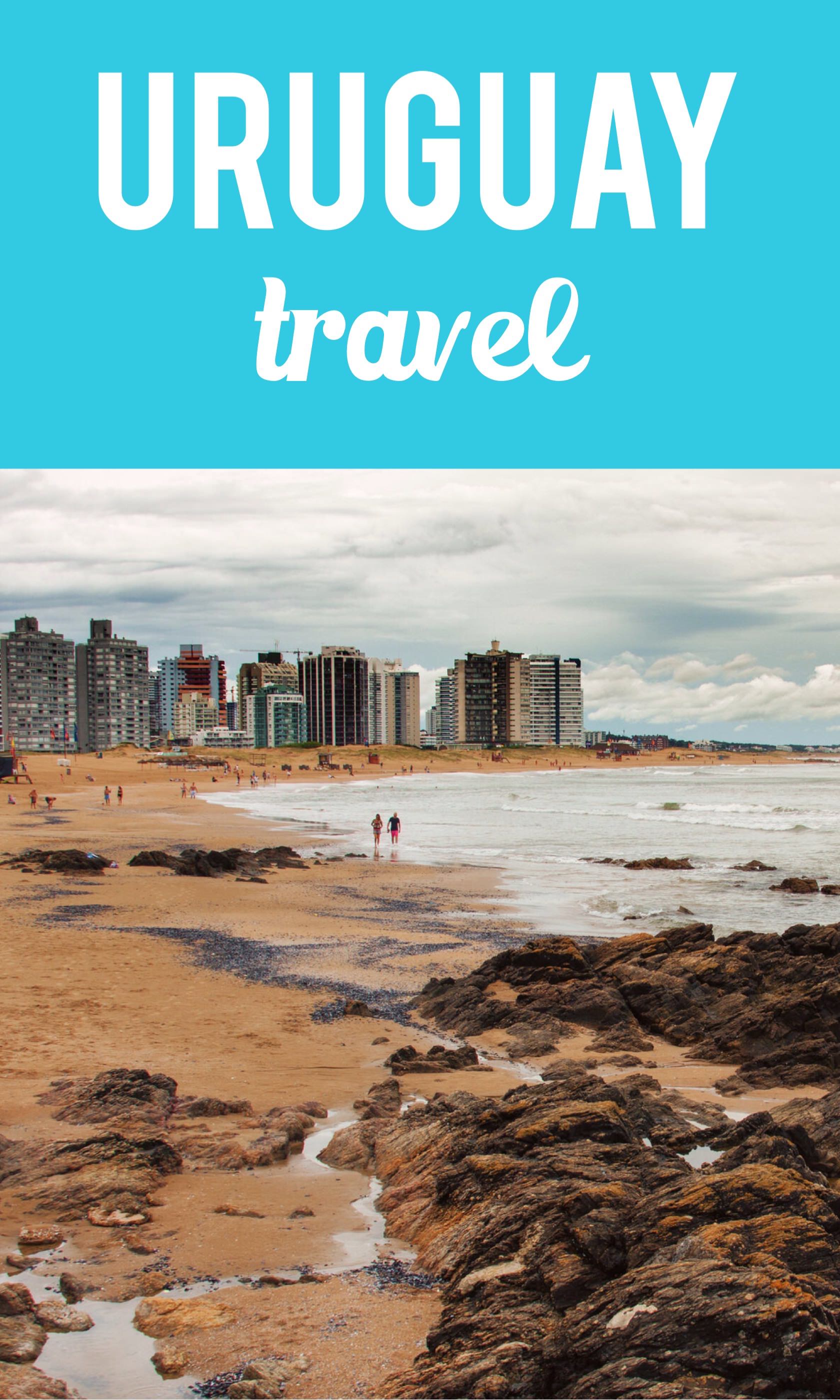
Sandwiched between Brazil and Argentina, the two largest countries in South America, Uruguay is sometimes overlooked. But the “Switzerland of South America” offers more than meets the eye: you can spend time with the cowboys on an estancia or head off-road for a gaucho adventure; hang out in Punta del Este, the playground of models and millionaires; or just get some sun at some of the best beaches in the southern hemisphere.
Uruguay is located on the east coast of South America between Argentina and Brazil. On the map it looks tiny in comparison to its huge neighbours and, with a population of approximately 3.5 million people, it is relatively small. But don’t let size put you off!
The name “Uruguay” literally means “river of birds,” and the range of both animal and birdlife that lives here make it an excellent destination for nature lovers. With government-maintained hides dotted in choice spots around the country, visitors have a great opportunity to catch sight of some of these local inhabitants.
Gaucho (cowboy) culture is another important piece of the puzzle that makes up Uruguay. The largest gaucho festival in South America, Fiesta de la Patria Gaucha, takes place in Uruguay during the month of March. And if you want to have a go at being a gaucho for yourself, there are estancias of all shapes and sizes with different programmes available.
Besides the countryside, however, Uruguay also boasts one of the richest playgrounds in the world: Punta del Este. It’s become a haven for the rich and famous during the summer months of December to February, and if you fancy some glitz to go with your gaucho, this is the place to be.
Getting to and from Uruguay
It is possible to arrive in Uruguay by plane, by long-distance bus, or by boat. Most international flights arrive into Montevideo Airport. For those visiting Punta del Este, flights usually arrive at Montevideo and then connect to the domestic network.
[box style=””]To and From the Airport has the rundown on getting you from the airport to the city. Frequent Flyer Masters learn to earn their miles fast, and get free flights around the world.[/box]
Some of the main carriers that fly into Uruguay are TAM, LAN, Iberia, American Airlines, and Lufthansa, which are all part of either the Oneworld or Star Alliance networks. At the time of writing, TAM offers the best value if you’re wanting to travel with lots of baggage, with an allowance of two bags of 32kg per person, with the possibility to exchange one of those bags for a bike at no extra cost.
Note that citizens of the United States do not need to pay an entrance fee when arriving in Uruguay, unlike other South American countries like Argentina, Chile, and Brazil.
If you’re travelling around South America and want to reduce the cost of flying to and from your different destinations, the long-distance bus network is an excellent option. These buses are safe and comfortable and, although they take longer to get you from A to B, you get to see the places you’re travelling through instead of being stuck in a box in the sky.
There are several yacht harbours around the Uruguay coastline for those with the sea spirit in their veins. Alternatively, arrive in luxury on one of the cruiseliners that regularly call in here, with Punta del Este being the most prestigious stop on the route.
Getting around Uruguay
Bus
The bus network in Uruguay is the way to travel if you want to rely on public transport to get you around. Tres Cruces is the main bus depot in Montevideo and there are booths for all the major bus companies inside the station.
Buses are reliable and leave extremely punctually if things are going to plan, so you do need to be there on time. Baggage is stowed underneath in the hold and you’ll be given tickets to present to the baggage handler when you reach your destination. The longest bus journey you’re likely to take inside Uruguay is around five hours.
Train
The train network in Uruguay is no longer in operation. Although you will still find the original lines and stations in various places around the country, unfortunately the tracks are now silent … and there doesn’t seem to be any hope of that changing soon.
Car and camper rental
Car is the best way to travel around Uruguay if you want complete flexibility to be able to explore the local landscape. In Uruguay people drive on the right, like in other South American countries.
Traffic is not dense so it’s a relatively non-stressful experience, though you do need to look out for the odd driver who insists on overtaking on blind bends and other similarly crazy places.
Cycling and hiking
Travelling Uruguay on a motorbike or a bicycle is a fantastic way to see the country. The roads here are not busy so they are a pleasure to drive.
However, it’s important to plan your routes and stick to the tarmac roads, as the dirt roads are not designed for two-wheeled transport.
Plane
It is possible to fly to different destinations inside Uruguay but it’s not cheap.
Since buses provide an excellent means of getting around, plane travel is usually more hassle than it’s worth, especially when you consider check-in and waiting time.
Top 10 things to do in Uruguay
- Stay on a rural estancia. Estancias offer a choice of simple to luxury accommodation options in the middle of the Uruguayan countryside. Sit back and relax in the grounds of your estancia or spend time with the family with a more hands-on experience.
- Learn to be a gaucho. If you’ve always wanted to ride gaucho-style and find out what it’s like to live on the land, Panagea ranch is a place where you can try for yourself. Only for those willing to get stuck in.
- Celebrate carnaval in Montevideo. Different events happen throughout the month of February with the one of the main highlights being Las Llamadas in the Sur and Palermo districts.
- Tuck into a traditional asado meal. Uruguay has three cows for every person inhabiting the land so it’s not surprising that meat is a popular item on the menu. An asado is a traditional barbecue that cooks the meat to perfection.
- Spend a day at a local vineyard. The Tannat grape is at the heart of Uruguay’s wine tradition but very little ever goes for export. Taste it for yourself and see how the grape is turned into the final product.
- Explore Fray Bentos. Enjoy corned beef, Oxo, and other Fray Bentos products? All these products were originally produced in Uruguay, and the factory still stands today as the Museo de la Revolucion Industrial.
- Go off-road on a dirt-track adventure. Although the major cities in Uruguay are connected with regular tarmac roads, once you get off the main routes you’ll mostly be travelling on dirt roads. Hire a car and do some exploring of your own if you really want to get under the skin of the country.
- Be a hippy at Cabo Polonio. Famous because of its location, Cabo Polonio can only be accessed by crossing sand dunes using the local transport that ferries visitors from the road to the local area. It’s a local fishing village which shares its shores with the local sea lion colony. And from late September to November they’re joined by whales chilling out in the tranquil waters.
- Try some mate. Just as asado is a traditional food, mate (mah-tay) is a traditional drink. Made from the leaves of the yerba mate plant, the drink is believed to rejuvenate the body and provide energy for getting through the day. Most Uruguayans won’t leave home without their trusty mate flask.
- Live it up in Punta del Este. If it’s the high life you’re after, Punta del Este is the centre of all things glamorous, attracting superstars from around the world during the months of December to February.
Uruguay travel resources
Book accommodation in Uruguay and travel insurance for Uruguay through us — we love it when you do that!
Check out our Uruguay travel podcast or browse the articles below.
This page was written by Honor Dargan.
No posts
